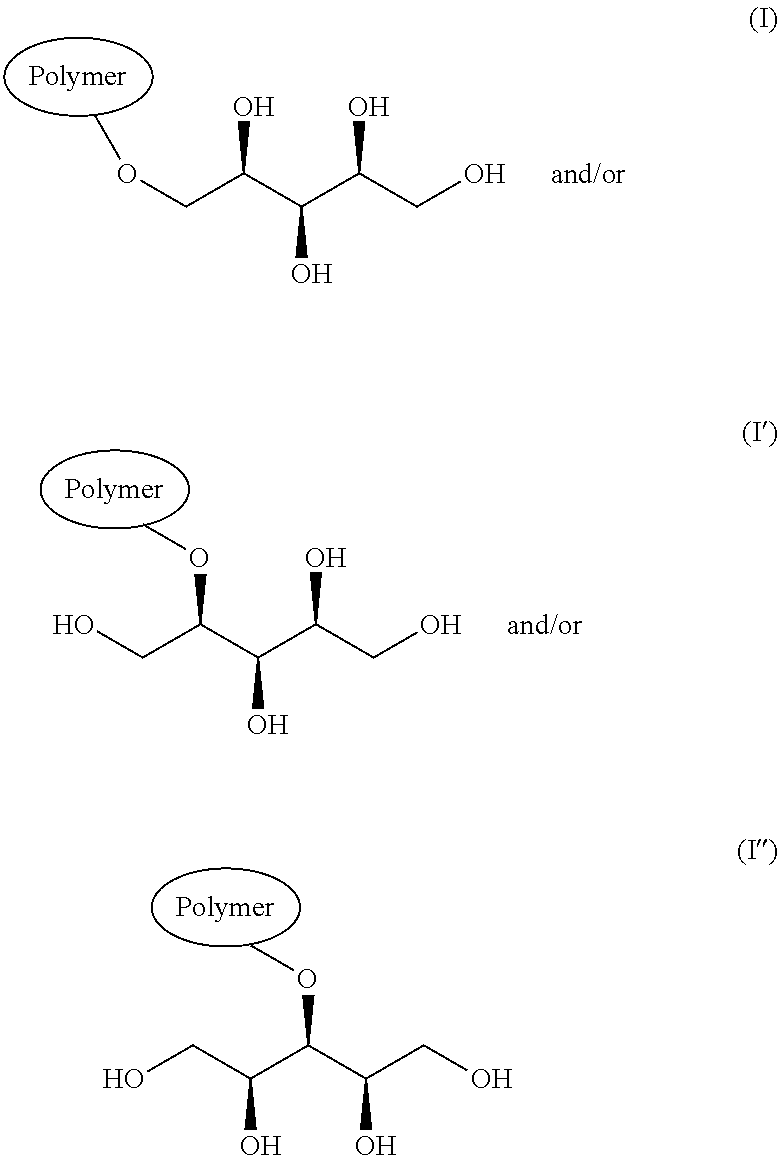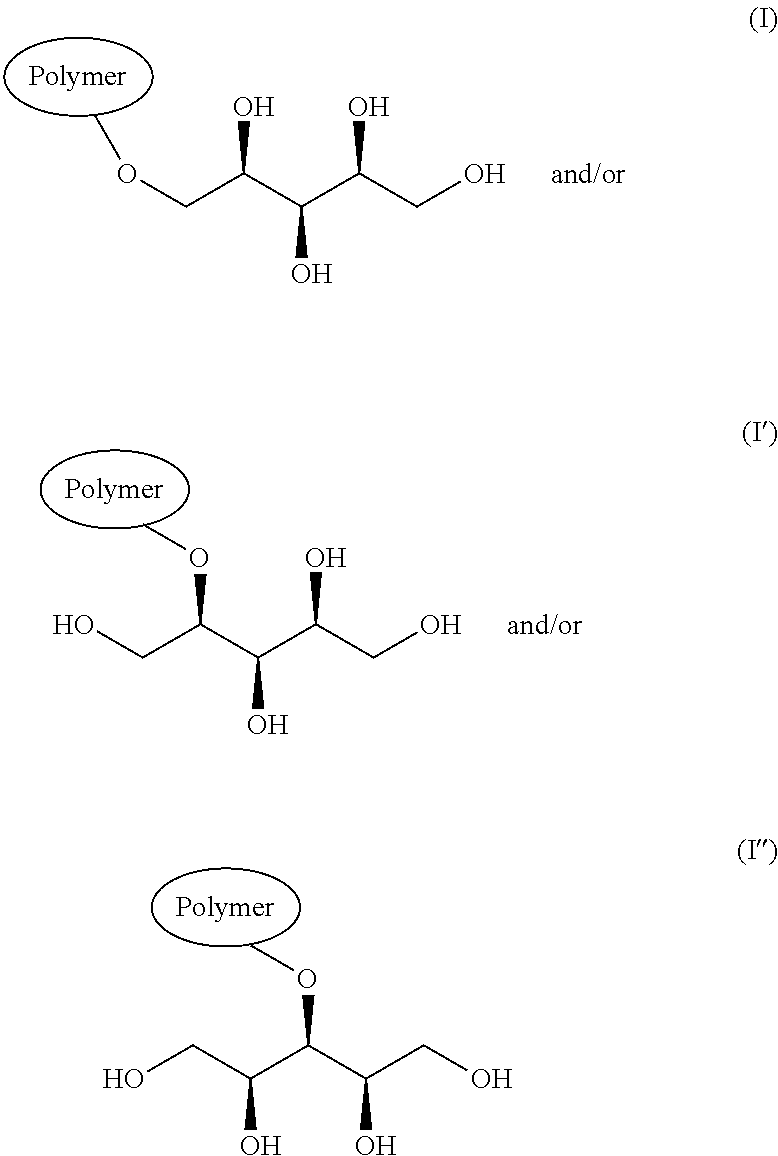Oral care compositions
a technology of oral care and compositions, applied in the field of oral care compositions, can solve the problems of dental calculus, plaque accumulation, and sensitivity of teeth, and achieve the effect of reducing tooth sensitivity
- Summary
- Abstract
- Description
- Claims
- Application Information
AI Technical Summary
Benefits of technology
Problems solved by technology
Method used
Image
Examples
example 1
[0286]Experimental Procedure for Preparation of Xylitol-Citric Acid Polymer
[0287]A mixture of 15.2 grams of xylitol and 19.2 grams of citric acid in a 500 ml single neck flask attached to a short-path rotary distillation apparatus is heated at 120° C. under vacuum at 50 torr. The resultant melt is heated for 6 hours and 3.5 grams of water is collected. Upon cooling to ambient temperature 31 grams of a colorless solid is obtained. The polymer is dissolved into deionized water with addition of sodium bicarbonate to obtain a 10% solution of pH 7.
example 2
[0288]Experimental Procedure for Preparation of Xylitol-Alginic Acid Polymer
[0289]A mixture of 10 grams of xylitol and 11.6 grams of alginic acid in a 250 ml single neck flask attached to a short-path rotary distillation apparatus is heated at 140° C. under vacuum at 50 torr. The resultant melt is heated for 5 hours and 1.1 grams of water is collected. Upon cooling to ambient temperature the resultant solid is mixed with 100 mL of deionized water and centrifuged. The supernatant is dialyzed (3500 molecular weight cutoff membranes) with deionized water and freeze dried to obtain 2.24 grams off-white powder. The polymer is dissolved into BHI medium and Jordan's medium with addition of 2N sodium hydroxide solution to obtain 2% solutions of pH 7.
example 3
[0290]Experimental Procedure for Preparation of Xylitol-Carboxymethyl Cellulose Polymer
[0291]In a 500 ml 3-neck flask, 100 g of xylitol is melted under a nitrogen atmosphere at 120° C. To the resultant molten xylitol is added 2.08 grams of carboxymethyl cellulose while raising the temperature to 170° C. at a rate to maintain a stirrable reaction melt. The reaction melt is stirred under a nitrogen sweep to facilitate removal of the water of reaction. After 7 hours the reaction mixture is cooled to ambient temperature and the reaction mass is dissolved into 200 ml of deionized water. The resultant solution is dialyzed (3500 molecular weight cutoff membranes) with deionized water and freeze dried to obtain 2.4 grams off-white powder. The polymer is dissolved into BHI medium and Jordan's medium with addition of 2N sodium hydroxide solution to obtain 2% solutions of pH 7.
PUM
| Property | Measurement | Unit |
|---|---|---|
| diameter | aaaaa | aaaaa |
| mean particle size | aaaaa | aaaaa |
| particle size distribution | aaaaa | aaaaa |
Abstract
Description
Claims
Application Information
 Login to View More
Login to View More - R&D
- Intellectual Property
- Life Sciences
- Materials
- Tech Scout
- Unparalleled Data Quality
- Higher Quality Content
- 60% Fewer Hallucinations
Browse by: Latest US Patents, China's latest patents, Technical Efficacy Thesaurus, Application Domain, Technology Topic, Popular Technical Reports.
© 2025 PatSnap. All rights reserved.Legal|Privacy policy|Modern Slavery Act Transparency Statement|Sitemap|About US| Contact US: help@patsnap.com



